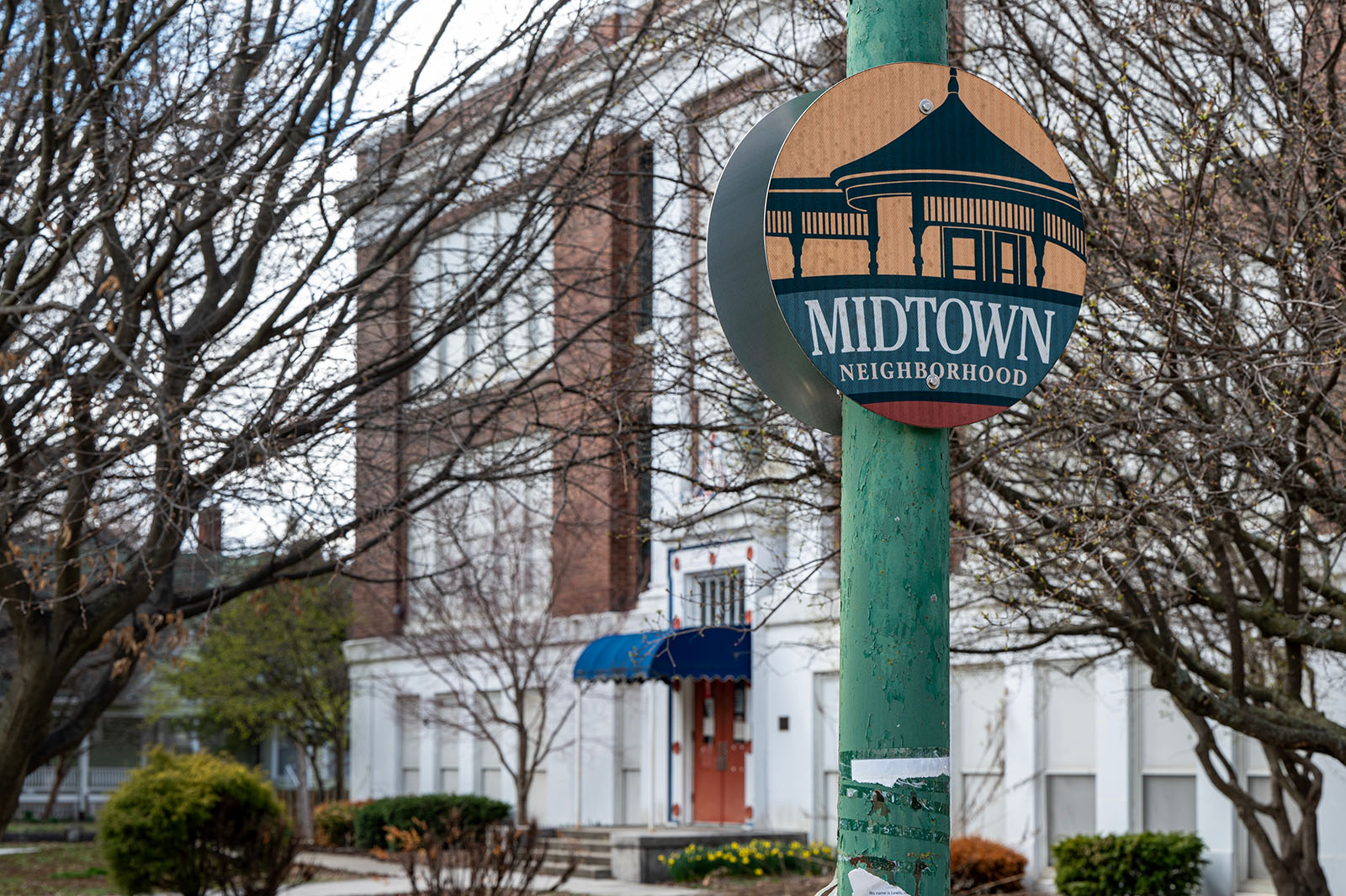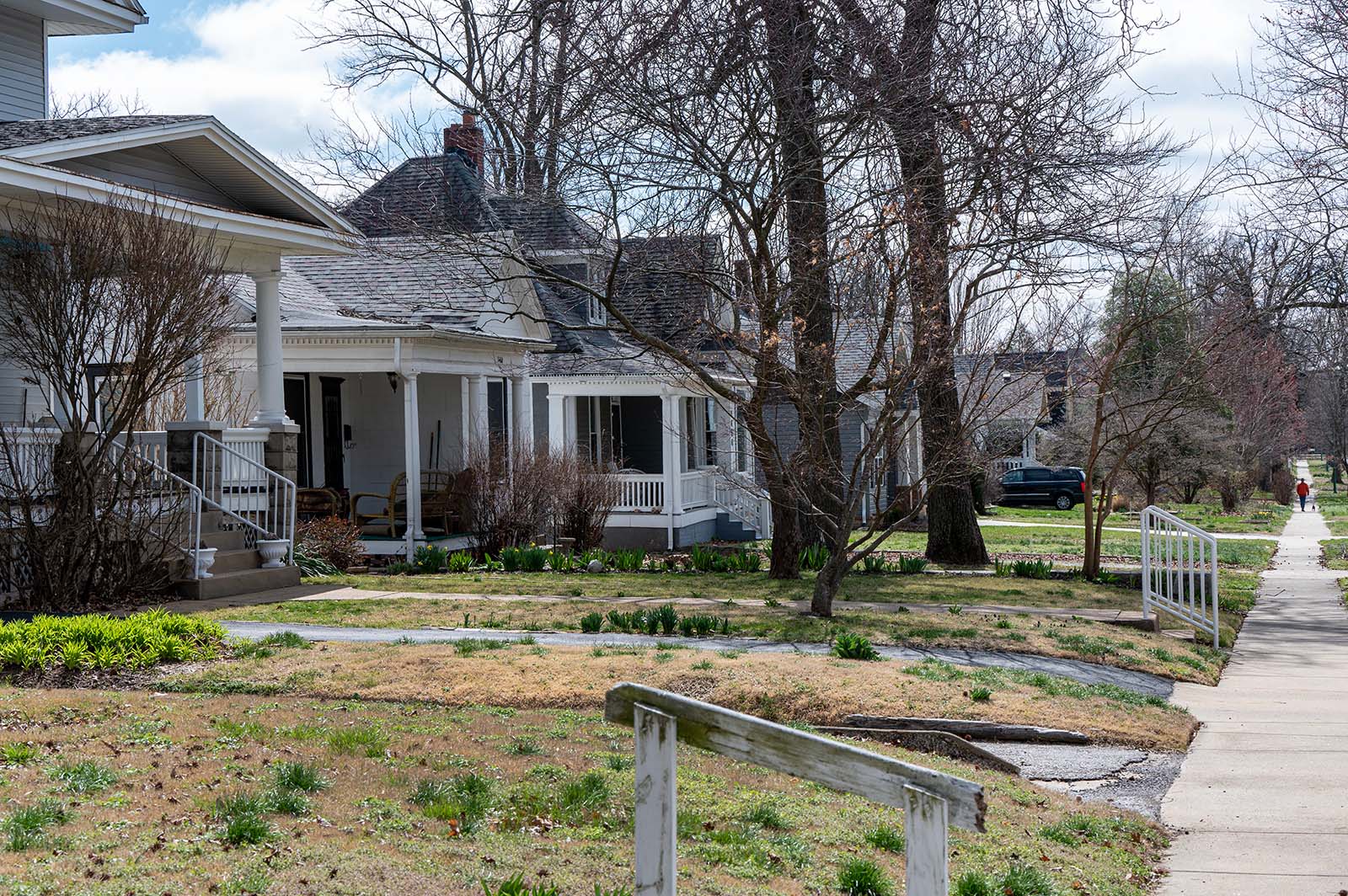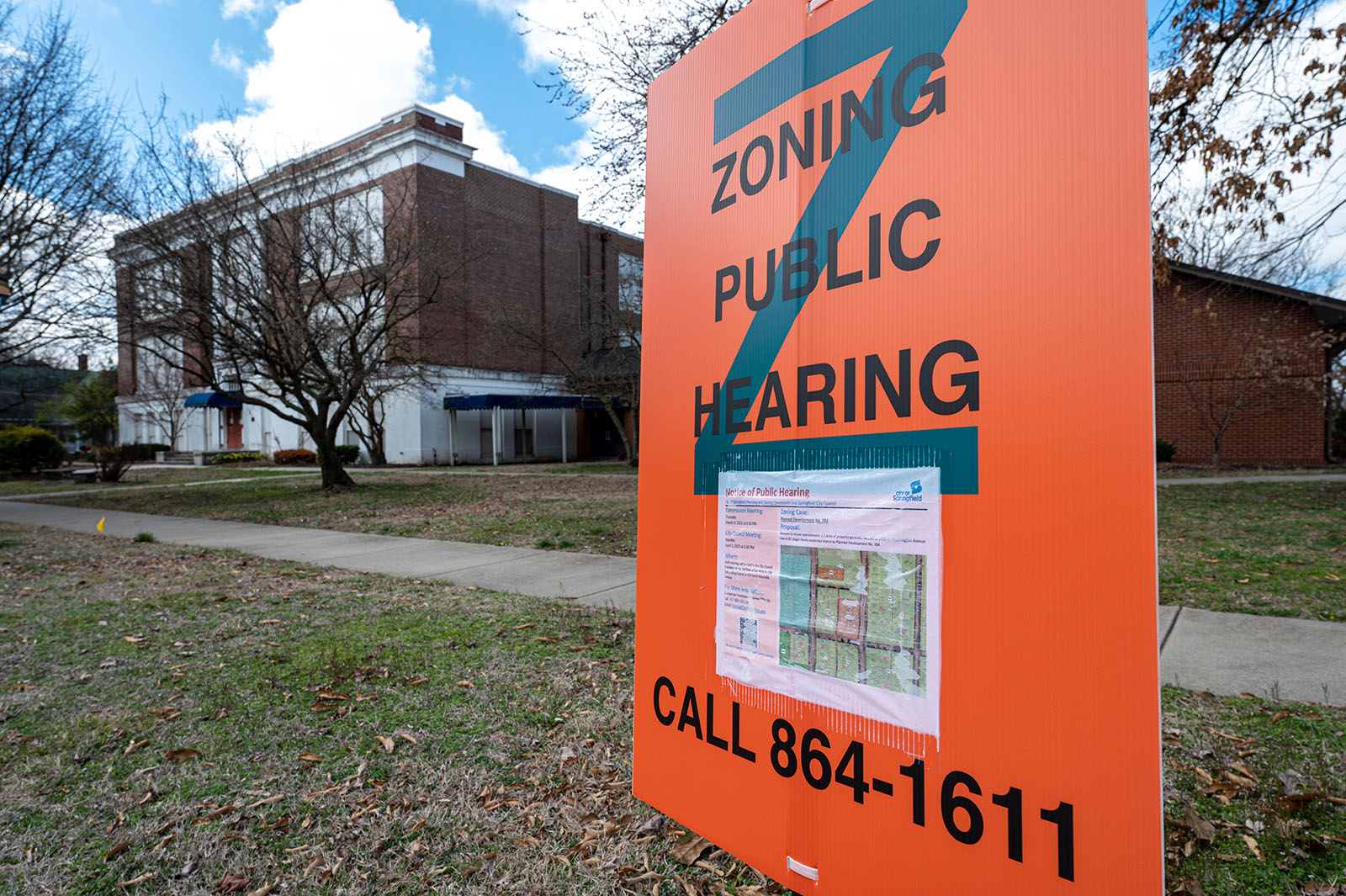The Springfield City Council will make a final decision on the possible redevelopment of Boyd Elementary School April 17.
Developer Matt Blevins and the Boyd School Redevelopment Corporation want to rezone 1.5 acres of land into a planned development. Center city zoning classification, according to Springfield’s land use codes, allows for apartment-style housing and small scale business use.
According to Greene County Assessor’s Office records, there is a little more than 26,000 square feet of building space on the property. The plan calls for about 3,500 square feet to be made into commercial space. The remaining 22,500 square feet will be made into 17 apartments.
Mary S. Boyd Elementary was built in 1911, and is part of Springfield’s historic Midtown neighborhood.
“The history of the architecture, the people, the proximity to other historic areas — and I can go on and on about all of the things that we love about this,” Blevins said.
In March, the Springfield Planning and Zoning Commission voted 7-0 to recommend approval for a planned development in the former Boyd school building at the northwest corner of North Washington Avenue and East Lynn Street.
Blevins said the development group held four different meetings with Midtown property owners to discuss their building plans and make changes with the neighbors’ considerations in mind.
“One of our goals for the project is to preserve a historic building while allowing uses that are appropriate for the neighborhood, and being a good steward of an over 100-year-old building that is steeped in Midtown history,” Blevins said. “Our intent was to bring the development and the neighborhood together, not apart, and to celebrate the adaptive reuse of a truly historic building.”
Planned development meant to be restrictive

Blevins told the planning commissioners the commercial space would be broken into two parts, with about 900 square feet allotted for a coffee shop or similar business, and about 2,400 square feet allotted for a potential restaurant.
Springfield Director of Planning and Development Susan Istenes told the City Council the planned development zoning designation serves two key purposes for the Boyd School Redevelopment Corporation.
“The rezoning is necessary to include the nonresidential uses, and the rezoning also allows for preservation of trees on site,” Istenes said.
A planned development puts more restrictions on property development than commercial zoning designations would, under Springfield’s zoning codes.
“It encourages private development in a manner that will not detract from the neighborhood, the neighborhood’s historic character, and the intent is to preserve the structure,” Istenes said.
Istenes added that the developers agreed to some very specific conditions.
“Those limits would limit the total amount of commercial square footage to 3,500 square feet,” Istenes said. “It would be located at the ground level, and it would be comprised of eating and drinking establishments, offices, personal services and retail sales.”
Restriction on apartment units
On April 3, Zone 1 council member Monica Horton introduced an amendment to the Boyd Elementary zoning bill, dropping the maximum number of family dwelling units to 20. The existing city code limits the maximum number of units to 24.
“(Blevins) actually stated that he wouldn’t exceed 20 should the retail, the commercial areas of the building not work out in terms of a commercial tenant, he would develop that particular space into dwellings,” Horton said.
Presently, the development group plans 17 units, but Blevins said the cap of 20 from the Horton amendment is agreeable.
“We’re more than willing to reduce it down to 20,” Blevins said.
Midtown also has its own neighborhood plan, adopted in 2001. In addition to the former Boyd Elementary School, Midtown includes Drury University, Cox Medical Center North, and the world headquarters of the Assemblies of God. The plan contains provisions “to encourage the preservation of architecturally significant structures,” and to, “encourage private redevelopment in a manner that will not detract from the neighborhoo’s historic character.”
Some neighbors want prohibition at Boyd

Ralph Plank lives on Washington Avenue, about three houses away from Boyd Elementary. Plank argued the neighborhood lies between Commercial Street and downtown Springfield, and people can walk to both of those areas to go to restaurants. Midtown, he said, is better suited to stay residential.
“Allowing a restaurant with a bar is a terrible idea at Boyd and counter to the Midtown plan,” Plank said. “Boyd is not on a busy street, it’s on Washington, which is a dead end to Drury. It’s very quiet.”
Nathan Davis also lives on Washington Avenue, and implored the City Council not to allow the sale of alcoholic beverages on the Boyd property.
“Sometimes I feel like no one is hearing because of those who are in favor of the project,” Davis said. “We are also in favor of the project, except we don’t want alcohol served at that location, and that reason is because there are Drury students only one block away.”
Blevins said the development group would not allow a bar or taproom at Boyd, but would allow a tenant that is a restaurant with licenses to sell alcoholic beverages.
Istenes noted there is no application for a liquor license within the zoning case. The Springfield Licensing Department would take up a liquor license application later, once a restaurant tenant has a lease agreement with the building owners.
“We don’t issue liquor licenses in the planning department,” Istenes said.
Springfield Deputy City Attorney Jan Millington said the neighbors could protest a restaurant’s application for a liquor license, and if at least 51 percent of neighboring property owners protest the application, the issue would go before the City Council for a decision.
“There’s ample opportunity for people to address any application for a liquor license other than today,” Millington said.
Some neighbors support a new vision for Boyd
Dee Ogilvy attended some of the neighborhood meetings with the developers, and met privately with Blevins to address concerns specific to her house. Ogilvy previously served on the Springfield Planning and Zoning Commission.
“(Blevins) has listened to us and addressed our concerns,” Ogilvy said. “I have stood on the property with Mr. Blevins and had conversations about traffic, lighting, fencing, trash, and I feel satisfied that he intends to be an honest and good neighbor.”
Ran Cummings, president of the Midtown Neighborhood Association, made a statement in support of the project on the association’s behalf.
“While there are a variety of voices on the issue of this development in our community, at the end of it all, we simply want to see a positive outcome for this beloved building and the character it brings to our neighborhood,” Cummings said. “The developer has been adamant in his commitment to these concepts and his affinity for the structure itself.”


